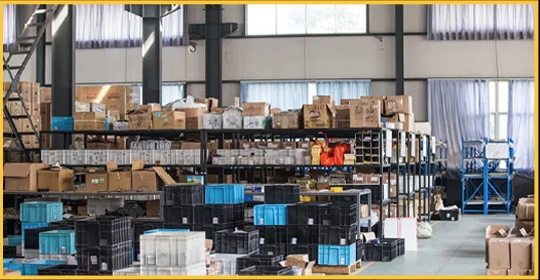
-
 Afrikaans
Afrikaans -
 Albanian
Albanian -
 Amharic
Amharic -
 Arabic
Arabic -
 Armenian
Armenian -
 Azerbaijani
Azerbaijani -
 Basque
Basque -
 Belarusian
Belarusian -
 Bengali
Bengali -
 Bosnian
Bosnian -
 Bulgarian
Bulgarian -
 Catalan
Catalan -
 Cebuano
Cebuano -
 Corsican
Corsican -
 Croatian
Croatian -
 Czech
Czech -
 Danish
Danish -
 Dutch
Dutch -
 English
English -
 Esperanto
Esperanto -
 Estonian
Estonian -
 Finnish
Finnish -
 French
French -
 Frisian
Frisian -
 Galician
Galician -
 Georgian
Georgian -
 German
German -
 Greek
Greek -
 Gujarati
Gujarati -
 Haitian Creole
Haitian Creole -
 hausa
hausa -
 hawaiian
hawaiian -
 Hebrew
Hebrew -
 Hindi
Hindi -
 Miao
Miao -
 Hungarian
Hungarian -
 Icelandic
Icelandic -
 igbo
igbo -
 Indonesian
Indonesian -
 irish
irish -
 Italian
Italian -
 Japanese
Japanese -
 Javanese
Javanese -
 Kannada
Kannada -
 kazakh
kazakh -
 Khmer
Khmer -
 Rwandese
Rwandese -
 Korean
Korean -
 Kurdish
Kurdish -
 Kyrgyz
Kyrgyz -
 Lao
Lao -
 Latin
Latin -
 Latvian
Latvian -
 Lithuanian
Lithuanian -
 Luxembourgish
Luxembourgish -
 Macedonian
Macedonian -
 Malgashi
Malgashi -
 Malay
Malay -
 Malayalam
Malayalam -
 Maltese
Maltese -
 Maori
Maori -
 Marathi
Marathi -
 Mongolian
Mongolian -
 Myanmar
Myanmar -
 Nepali
Nepali -
 Norwegian
Norwegian -
 Norwegian
Norwegian -
 Occitan
Occitan -
 Pashto
Pashto -
 Persian
Persian -
 Polish
Polish -
 Portuguese
Portuguese -
 Punjabi
Punjabi -
 Romanian
Romanian -
 Russian
Russian -
 Samoan
Samoan -
 Scottish Gaelic
Scottish Gaelic -
 Serbian
Serbian -
 Sesotho
Sesotho -
 Shona
Shona -
 Sindhi
Sindhi -
 Sinhala
Sinhala -
 Slovak
Slovak -
 Slovenian
Slovenian -
 Somali
Somali -
 Spanish
Spanish -
 Sundanese
Sundanese -
 Swahili
Swahili -
 Swedish
Swedish -
 Tagalog
Tagalog -
 Tajik
Tajik -
 Tamil
Tamil -
 Tatar
Tatar -
 Telugu
Telugu -
 Thai
Thai -
 Turkish
Turkish -
 Turkmen
Turkmen -
 Ukrainian
Ukrainian -
 Urdu
Urdu -
 Uighur
Uighur -
 Uzbek
Uzbek -
 Vietnamese
Vietnamese -
 Welsh
Welsh -
 Bantu
Bantu -
 Yiddish
Yiddish -
 Yoruba
Yoruba -
 Zulu
Zulu


Nov . 16, 2024 21:12 Back to list
Understanding Liquid Tight Cord Grips for Enhanced Electrical Connections and Safety Solutions
Understanding Liquid Tight Cord Grips A Comprehensive Overview
In today's industrial landscape, ensuring the integrity and reliability of electrical installations is paramount. This is where liquid tight cord grips come into play. These specialized devices are designed to provide exceptional sealing and strain relief for electrical cords in applications where exposure to moisture, chemicals, or other hazardous elements is a concern. This article delves into the features, applications, and advantages of liquid tight cord grips, emphasizing their significance in various sectors.
Liquid tight cord grips, also known as liquid tight connectors or strain relief fittings, are constructed to create a secure and hermetic seal around electrical cables. The primary function of these grips is to prevent the ingress of water and dust, safeguarding the electrical connections housed within. Made from materials such as nylon, stainless steel, or other weather-resistant substances, liquid tight cord grips are engineered to withstand harsh environmental conditions, ensuring long-term durability and performance.
One of the most significant features of liquid tight cord grips is their ability to accommodate a variety of cable sizes and types
. This versatility makes them suitable for different applications, from industrial machinery to outdoor electrical installations. These grips come in various configurations, offering flexibility in terms of installation and usage. They are often equipped with locking mechanisms that provide added security, ensuring that the cable remains firmly in place even under vibration or stress.liquid tight cord grips

The applications for liquid tight cord grips are extensive and span numerous industries. In the manufacturing sector, these fittings are essential for equipment exposed to coolant, oils, or other liquids. In the food and beverage industry, ensuring sanitary conditions is critical, making liquid tight cord grips an ideal choice for protecting electrical connections in processing machines. Additionally, in outdoor settings such as telecommunications and power distribution, the robustness of liquid tight cord grips helps safeguard sensitive electronics from environmental elements.
Moreover, liquid tight cord grips contribute significantly to worker safety. By preventing moisture from entering electrical enclosures, these devices help minimize the risk of short circuits, equipment failure, and potential electrical hazards. This protective quality not only enhances safety for personnel but also increases the reliability of the overall electrical system, reducing downtime and maintenance costs.
When selecting a liquid tight cord grip, several factors should be considered. The material should be suited to the specific environmental conditions it will face, whether that be exposure to extreme temperatures, chemicals, or UV radiation. Additionally, ensuring that the grip can accommodate the cable’s diameter and provide a proper seal is crucial for effective protection. Certifications and compliance with industry standards should also be verified to ensure that the selected product meets safety regulations.
In conclusion, liquid tight cord grips are an essential component in modern electrical installations, providing robust sealing and strain relief to protect against environmental hazards. Their versatility, effectiveness, and contribution to safety make them indispensable across a wide range of industries. As technology and applications continue to evolve, the importance of these fittings will undoubtedly remain a critical aspect of ensuring the durability and reliability of electrical systems.
Latest news
What Are Construction Tools and How Are They Used?
NewsJul.11,2025
Professional-Grade Duct Rodding Tools for Superior Cable Installation
NewsJul.11,2025
Enhancing Safety and Efficiency with Modern Hot Stick Solutions
NewsJul.11,2025
Empowering Cable Installation with Advanced Rodder Solutions
NewsJul.11,2025
Elevate Your Cable Installation Projects with Cable Pulling Tools
NewsJul.11,2025
Efficient Cable Handling Solutions: Cable Rollers for Sale
NewsJul.11,2025











